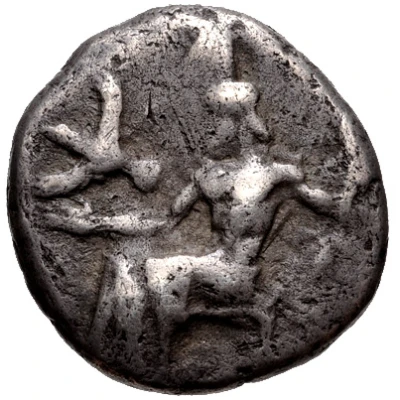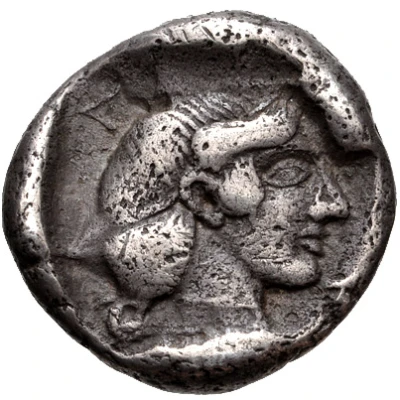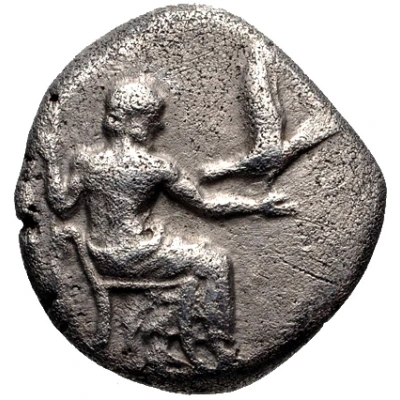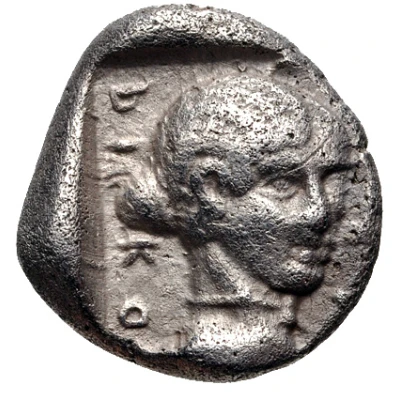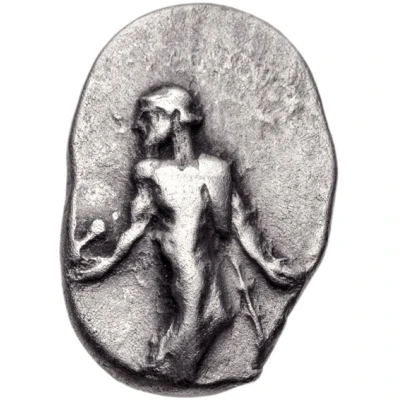
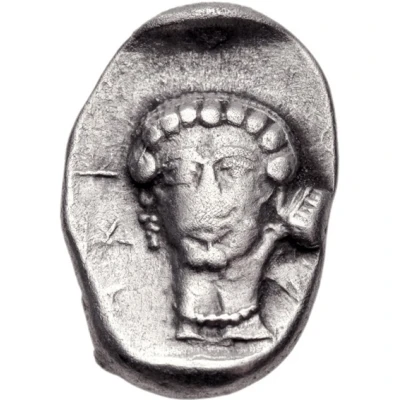

© Classical Numismatic Group, Inc.
Hemidrachm Tegea 460 BC - 450 BC
| Silver | 2.95 g | 12.0 mm |
| Issuer | Arcadian League (Arkadia) |
|---|---|
| Type | Standard circulation coin |
| Years | 460 BC - 450 BC |
| Value | Hemidrachm (½) |
| Currency | Drachm |
| Composition | Silver |
| Weight | 2.95 g |
| Diameter | 12.0 mm |
| Shape | Round (irregular) |
| Technique | Hammered, Incuse |
| Demonetized | Yes |
| Updated | 2024-10-10 |
| Numista | N#153143 |
|---|---|
| Rarity index | 100% |
Reverse
Head of Kallisto facing, hair bun to right and within incuse square
Script: Greek
Comment
BCD Peloponnesos -; BCD Peloponnesos II 2570.
As of 2010, only 6 specimens known, 4 are in museums.
Interesting fact
The Hemidrachm coin from Tegea, Arcadia, was used as a form of currency in ancient Greece during the 5th century BC. Its name "Hemidrachm" means "half drachma," indicating that it was worth half the value of a standard drachma coin. Despite its relatively low value, the Hemidrachm was made of silver, which was a valuable and prestigious metal at the time. This coin was used for everyday transactions and was also used to pay taxes and debts. Its design featured an image of a mythical creature called a "triton," which was a half-human, half-fish creature that was believed to be a symbol of the sea god Poseidon. The Hemidrachm coin was an important part of the ancient Greek economy and is now a valuable collector's item for numismatists.
